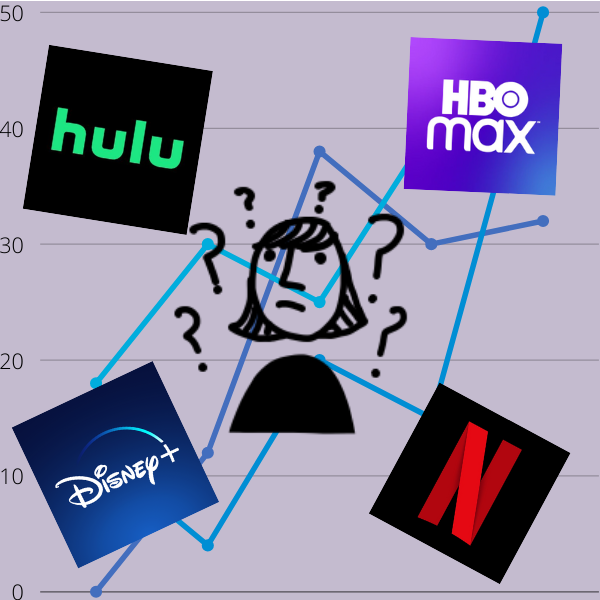Pelham Picks a Streaming Service
December 22, 2020
Having to spend the majority of one’s time indoors over the past nine months has shown to be taxing on people’s mental and physical well-being. One outlet that many people have turned to? Streaming services. But with so many options available today spanning far beyond Netflix, which one is the best to choose from? Here is the ranking of the best streaming services ranked on three different categories by PMHS students, as well as expert rankings.
- Student Rankings: Which streaming platform do you use?
- Netflix
- Disney +
- Amazon Prime Video
- Hulu
- HBO
- Data based: What are the most subscribed to streaming platforms? (According to Fox Business)
- Netflix
- Amazon Prime Video
- Disney +
- Hulu
- HBO
For a long time, Netflix was the only option for those wishing for a streaming service. Despite the addition of many newer services, Netflix still remains king in terms of the number of users, not just in PMHS, but worldwide as well. However, with the emergence of Disney+, Netflix may finally have a real challenger. Statistics show that worldwide, Disney+ is growing exponentially, surpassing even their own expectations as they have surpassed their goal for growth in their first four years in less than one, now having more than 60 million subscribers. While Amazon Prime Video is second in the magnitude of subscribers, it is important to note that many subscribers were not looking to get Prime Video, but rather have it as an included benefit for being an Amazon Prime subscriber.
- Student Rankings: Which streaming service has the best original content?
- Netflix
- Disney +
- Hulu
- Amazon Prime Video
- HBO
- Which streaming service has the best original content? (according to Rotten Tomatoes data from WhistleOut.com)
- Disney+
- Hulu
- HBO
- Netflix
- Amazon Prime Video
The student rankings, in this case, may have fallen victim to availability bias, as although there are some standout titles such as Stranger Things and The Crown, much of Netflix’s original content is considered average. Disney+ original content received the highest critic score with hits like The Mandalorian and High School Musical: The Musical: The Series, although it is important to note that Disney+ currently has one of the smaller selections of original content due to how recently it was released. Hulu and HBO also both top Netflix due to hits like The Handmaid’s Tale and Castle Rock on Hulu as well as Westworld and Chernobyl on HBO.
- Which streaming service has the most diverse library?
- Netflix
- Disney +
- Hulu
- Amazon Prime Video
- HBO
- Which streaming service has the most diverse library? (According to business insider)
- Amazon Prime Video
- Netflix
- Hulu
- Disney+
- HBO
With over 18,000 movies and 1,900 TV shows, Amazon Prime Video has the largest content library with some form of content for any kind of viewer. That’s more than three times as many movies are available on the second-largest platform, Netflix. HBO has long prided itself on having titles of much higher quality than any other streaming service, justifying them having the highest subscription price, but that comes at the cost of the amount of content with under 1,200 combined movies and TV shows.
Sometimes it ends up being the case that the original stays the best, and according to PMHS students, that is certainly the case – Netflix comes out on top in every category. Looking at the data and expert rankings, however, the race becomes a little bit tighter. Giving each service a score of 1-5 based on their placement in each list (1st place gets 5 points, 2nd place 4 points, etc…), Netflix and Amazon Prime Video tie for 1st place with an aggregate score of 11, followed by Disney+ at 10, Hulu at 9, and finally HBO with 5. Whichever service one prefers, competition over the streaming market continues to tighten as more and more players enter the game trying to win over the same market. What should this competition mean for the consumer? Hopefully lower prices, and even better content to come.




